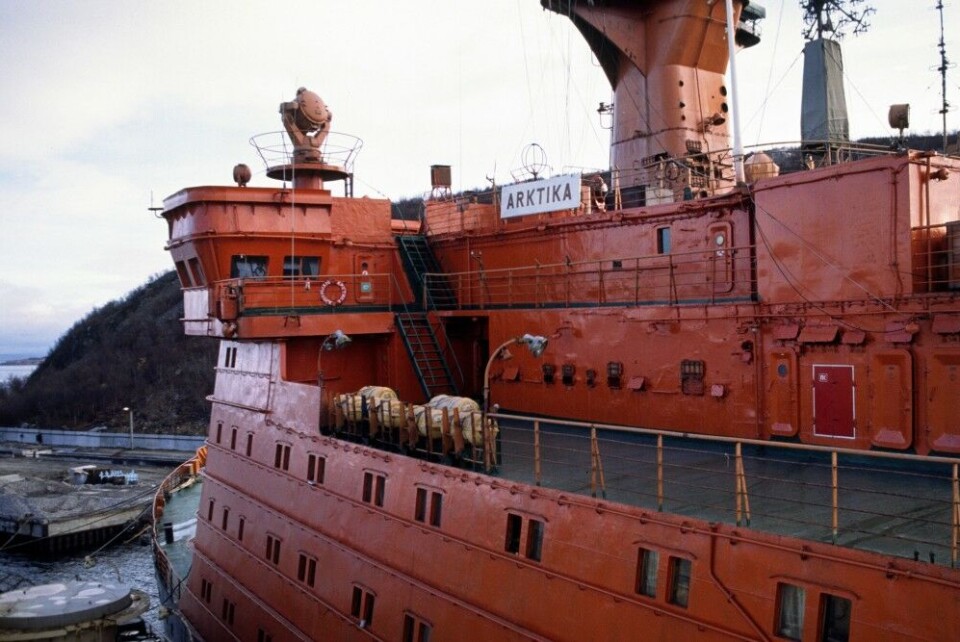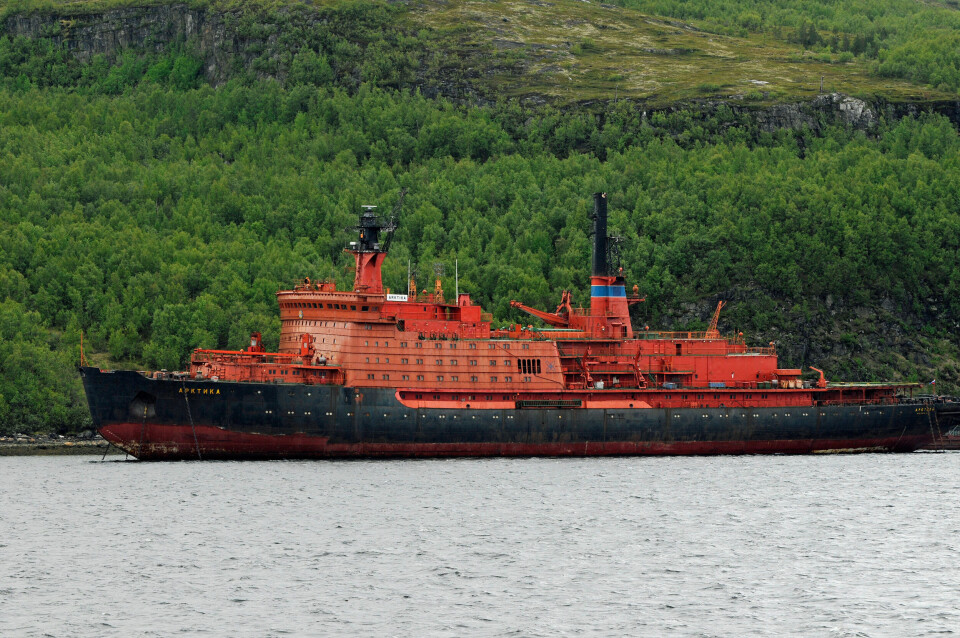
First icebreaker to reach the North Pole ends her days in a scrapyard
Plans to put the nuclear-powered icebreaker «Arktika» on display as museum will likely be cancelled.
p.p1 {margin: 0.0px 0.0px 0.0px 0.0px; font: 11.0px ‘Helvetica Neue’; color: #000000; -webkit-text-stroke: #000000}p.p2 {margin: 0.0px 0.0px 0.0px 0.0px; font: 11.0px ‘Helvetica Neue’; color: #000000; -webkit-text-stroke: #000000; min-height: 12.0px}span.s1 {font-kerning: none}
Rosatom and Nerpa shipyard have signed contract for unloading the spent nuclear fuel from the reactors on board «Arktika». Thereafter, the icebreaker will be cut up to scrap metal, Rosatomflot, the state enterprise for operating the fleet of nuclear powered civilian vessels informs.
The contract with Nerpa shipyard was signed on March 19th and the revenue from selling the scrap metal is estimated to be about 100-120 million rubles (€1,4 to €1,68 million).
It is planned to tow «Arktika» from her current location at Atomflot service base just north of Murmask to the Nerpa shipyard in Olenya Bay by the end of this year.
With the decision, earlier plans to make the historic icebreaker into a museum are likely to be scrapped. As late as in November last year, the governmental newspaper Rossiyskaya Gazeta reported it was no hurry to take any decision on what to do with «Arktika» since the vessel could be preserved as a museum.
In the central port of Murmansk, the world’s first nuclear-powered icebreaker «Lenin» already serves as a museum with tens of thousands of visitors annually. One idea was that «Arktika» could serve a similar purpose in St. Petersburg.

«Arktika» became the first surface vessel to manage what polar explorer Fridtjof Nansen attempted, but failed, to do on the voyage with «Fram» in 1893-1896. On August 17, 1977 «Arktika» reached the North Pole.
At the time, «Arktika» was the world’s most powerful icebreaker. The two reactors provided steam to the turbines boosting 75,000 horsepowers to the propellers while crashing through the ice towards the top of the world. Later, a series of five nuclear powered icebreakers of the same class were constructed. Two of them, the «Yamal» and «50 let Pobedy» are still in operation, while «Sibir» was towed to Nerpa for scrapping in 2015 and «Rossiya» and «Sovyetskiy Soyuz» are laid up at Atomflot in the Kola Bay.
«Arktika» was taken out of service in 2008. It is normal to cool down the reactors for a decade before dismantlement work starts.
Although the historic ship ends her days as scrap metal, the name «Arktika» will continue to sail the world’s northernmost waters. The first of a new generation nuclear powered icebreakers, the LK-60 class, currently under construction at the Baltic Yard in St. Petersburg has copied the name. The new «Arktika» recently had her protective reactor vessel successfully tested, the shipyard reported on Wednesday. By 2020, the icebreaker will start operations along Russia’s northern coast.
















